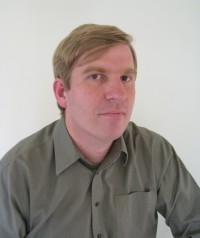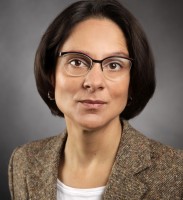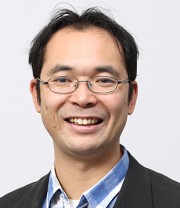 |
Tutorial III: Open Data and Semantic Technology
Speaker: Prof. Dr. Sören Auer, University of Bonn and Fraunhofer IAIS, Germany
Date: November 9, 2014 Time: 13.00-16.00 Room: Doi Suthep 1
Abstract:
In this tutorial, we will discuss the characteristics and benefits of semantic data integration as well as key standards such as RDF, RDF-Schema and SPARQL. We will look into tools for extracting, authoring, querying and linking of data. We will further discuss large scale applications of semantic technologies such as enterprise data integration, DBpedia knowledge extraction and Governmental Open Data Portals.
Bio:
Prof. Sören Auer studied Mathematics and Computer Science in Dresden, Hagen and Yekaterinburg (Russia). Before pursuing a scientific career, Sören was managing director of adVIS GmbH, a Dresden-based Internet and IT service provider until 2003. In 2006 he obtained his doctorate in Computer Science from Universität Leipzig. From 2006-2008 he worked with the database research group at the University of Pennsylvania, USA. Currently, he holds the chair for Enterprise Information Systems at University of Bonn and leads a research group at Fraunhofer Insitute for Analysis and Information Systems (IAIS). Sören has made substantial contributions to social and semantic web technologies, knowledge engineering, usability, as well as databases and information systems. He aims to combine strong theoretical results with high-impact practical applications. Sören is author and co-author of over 100 peer-reviewed scientific publications, which attracted more than 5,000 citations and result in a H-index of 31. Sören led / is leading several large-scale collaborative research projects such as the European Union’s FP7-ICT flagship project LOD2 comprising 15 partners from 11 countries. Sören is co-founder of several high-impact research and community projects such as the Wikipedia semantification project DBpedia, the OpenCourseWare authoring platform SlideWiki.org or the social Semantic Web toolkit OntoWiki. The technology Sören develops with his team fuels many industrial applications, such as the intranet and site search at Daimler AG or the European Commission's open data portal. He is organiser and co-programme chair of renowned conferences and workshops, including OKCON 2010, ESWC 2010, ICWE 2011, WWW 2012, European Data Forum, co-editor of the International Journal on Semantic Web and Information Systems, area editor of the Semantic Web Journal. He serves as an expert for industry, the European Commission, the W3C and board member of the Open Knowledge Foundation.
|
 |
Tutorial II: Description Logic Reasoning for Semantic Web Ontologies
Speaker: Dr. Anni-Yasmin Turhan, Dresden University of Technology, Germany
Date: November 9, 2014 Time: 09.00-12.00 Room: Doi Suthep 2
Abstract:
Description Logics (DLs) are a successful family of logic-based knowledge representation formalisms, which can be used to represent the conceptual knowledge of an application domain in a structured and formally well-understood way. Based on their formal semantics, a number of powerful DL reasoning services have been defined and are implemented in optimized reasoner systems. Formal ontology languages for the Semantic Web such as OWL 2 and its profiles have greatly increased interest in DLs and related reasoning services in recent years. Most of these ontology languages are based on DLs. This tutorial gives an introduction to the basic notions underlying knowledge representation and reasoning with DLs. The main focus is on those DLs that form the core of the OWL lightweight profiles and the reasoning services they are tailored for.
Bio:
Anni-Yasmin Turhan is an adjunct professor at Technische Universität Dresden. After obtaining her Diploma in Computer Science, she started her scientific career in a research project on non-standard inferences in Description Logics. Her research interests are reasoning under vagueness and similarity. In her post-doc years she was a key researcher in several research projects on situation recognition by Description Logics reasoning. Earlier in this year she had completed her postdoctoral degree on maintenance and flexible access to description logic ontologies.
|
 |
Tutorial I: Ontology Building and its Application using Hozo
Speaker: Dr. Kouji Kozaki, I.S.I.R., Osaka University, Japan
Date: November 9, 2014 Time: 09.00-12.00 Room: Doi Suthep 1
Abstract:
Hozo (http://www.hozo.jp) is an environment for building/using ontologies based on ontological theory of role [1]. It provides sophisticated user interfaces with some characteristic functions such as dynamic is-a hierarchy generation [2] and divergent ontology exploration [3] so that the users can build well-organized ontologies according to appropriate viewpoints. Various ontologies and ontology-based applications are developed built using Hozo and its API.
This tutorial introduces how to build ontologies using Hozo with basic theories of ontological engineering. Then, I explain techniques to develop ontology-based application using Hozo API with some example applications.
[1] Mizoguchi R., Sunagawa E., Kozaki K. and Kitamura Y., A Model of Roles within an Ontology Development Tool: Hozo, J. of Applied Ontology, Vol.2, No.2, pp.159-179, 2007.
[2] Kozaki K., Hihara K. and Mizoguchi R., Dynamic Is-a Hierarchy Generation System Based on User's Viewpoint, Proc. of Joint International Semantic Technology Conference (JIST2011), Dec. 4-7, 2011, Hangzhou, China, LNCS 7185, pp.96-111, 2012.
[3] Kozaki K., Hirota T. and Mizoguchi R., Understanding an Ontology through Divergent Exploration, Proc. of 8th Extended Semantic Web Conference (ESWC2011),pp.305-320, Heraklion, Greece, May 29 - June 2, 2011.
Bio:
Kouji Kozaki is currently Associate Professor at the Department of Knowledge Science, the Institute of Scientific and Industrial Research, Osaka University. He received his Bachelor, Master and Doctoral degrees of Engineering in 1997, 1999 and 2002 from Osaka University, respectively. His research interest includes ontology building, fundamental theory of ontological engineering (especially for role and identity), ontology development system, ontology-based application. A major theme of his research is a development Hozo (http://www.hozo.jp), which is an environment for building/using ontologies, and ontology building in several domains such as clinical medicine, bioinformatics, environmental engineering.
|
 |
Tutorial IV: Constructing and Understanding Knowledge Graph
Speaker: Dr. Jeff Z. Pan, University of Aberdeen, UK
Date: November 9, 2014 Time: 13.00-16.00 Room: Doi Suthep 2
Abstract:
The benefits and potentials of Linked Data (LD) have been utilised and demonstrated by numerous applications from academic, industry and public sectors. This explains the recent vast increase of LD not only in data volume but also in number of datasets and related domains. However, consuming a linked dataset requires technical background of Semantic Web (SW) techniques and the knowledge of the dataset. Direct use of such valuable knowledge space is very time consuming and is still a privilege of SW "geeks". In this tutorial, we propose the vision of converting LD into knowledge graphs which are not only capable to enhance accessibilities in LD consumption but also enable LD directly usable to end users. Specifically, this tutorial consists of two parts. The first part will introduce the overview, applications and research challenges to create knowledge graphs on top of LD. The second part will focus on specific techniques for knowledge graph, including knowledge graph construction and knowledge graph understanding.
Bio:
Jeff Z. Pan received his Ph.D. in computer science from The University of Manchester in 2004, on the topic of Description Logics: Reasoning Support for the Semantic Web. He joined the faculty in the Department of Computing Science at University of Aberdeen in 2005. He is now the Deputy Director of Research of the department. His research focuses primarily on knowledge representation and reasoning, in particular scalable ontology reasoning, querying and reuse, and their applications (such as Semantic Web, Advertising, Healthcare, Software Engineering and Multimedia). He is a key contributor to the W3C OWL2 standard. He leads the work of the TrOWL Tractable OWL2 reasoning infrastructure. He is widely recognised for his work on scalable and efficient ontology reasoning; he gave tutorials on this topic in e.g. AAAI2010, ESWC2010, ESWC2011, SemTech2011 and the Reasoning Web Summer School (2010 and 2011).
Dr Pan is a member of the Advisory Committee in the World Wide Web Consortium (W3C), an international organisation for setting up Web standards such as HTML, RDF and OWL. He is a Primary Member Representative of Object Management Group (OMG), a leading proponent of Business-IT integration standards. He chairs the OWL task force on uncertainty reasoning. He also chaired the W3C Multimedia Semantics Incubator Group and the Software Engineering Task Force in the Semantic Web Best Practice and Deployment (SWBPD) Working Group. His group is currently actively contributing to several W3C technical groups, including the OWL, SPARQL, Provenance and RDB2RDF. He co-edited a number of W3C technical reports, such as "XML Schema Datatypes in RDF and OWL". He is a Board Member of Semantic Technology Institute International (STI2). Dr. Pan has over 100 refereed publications.
|











